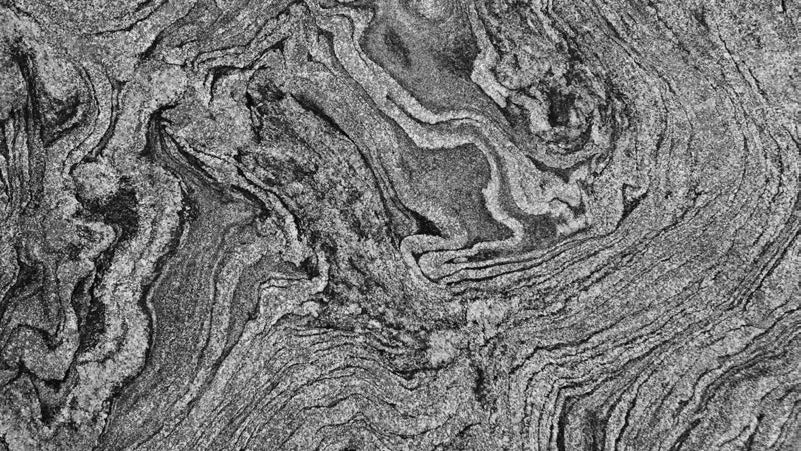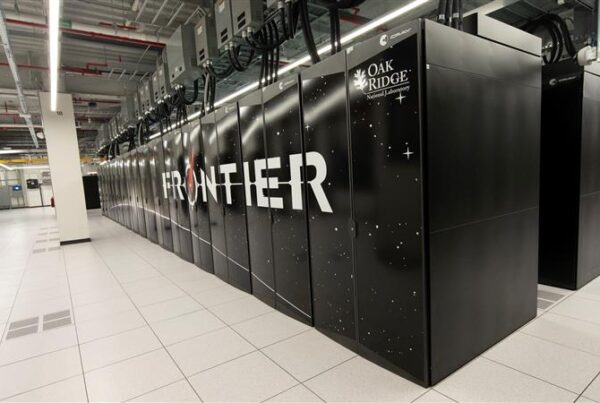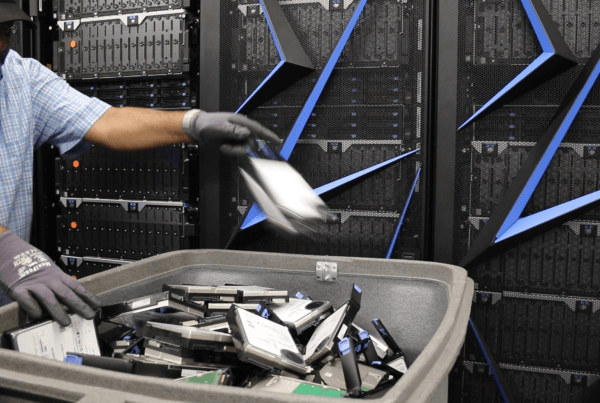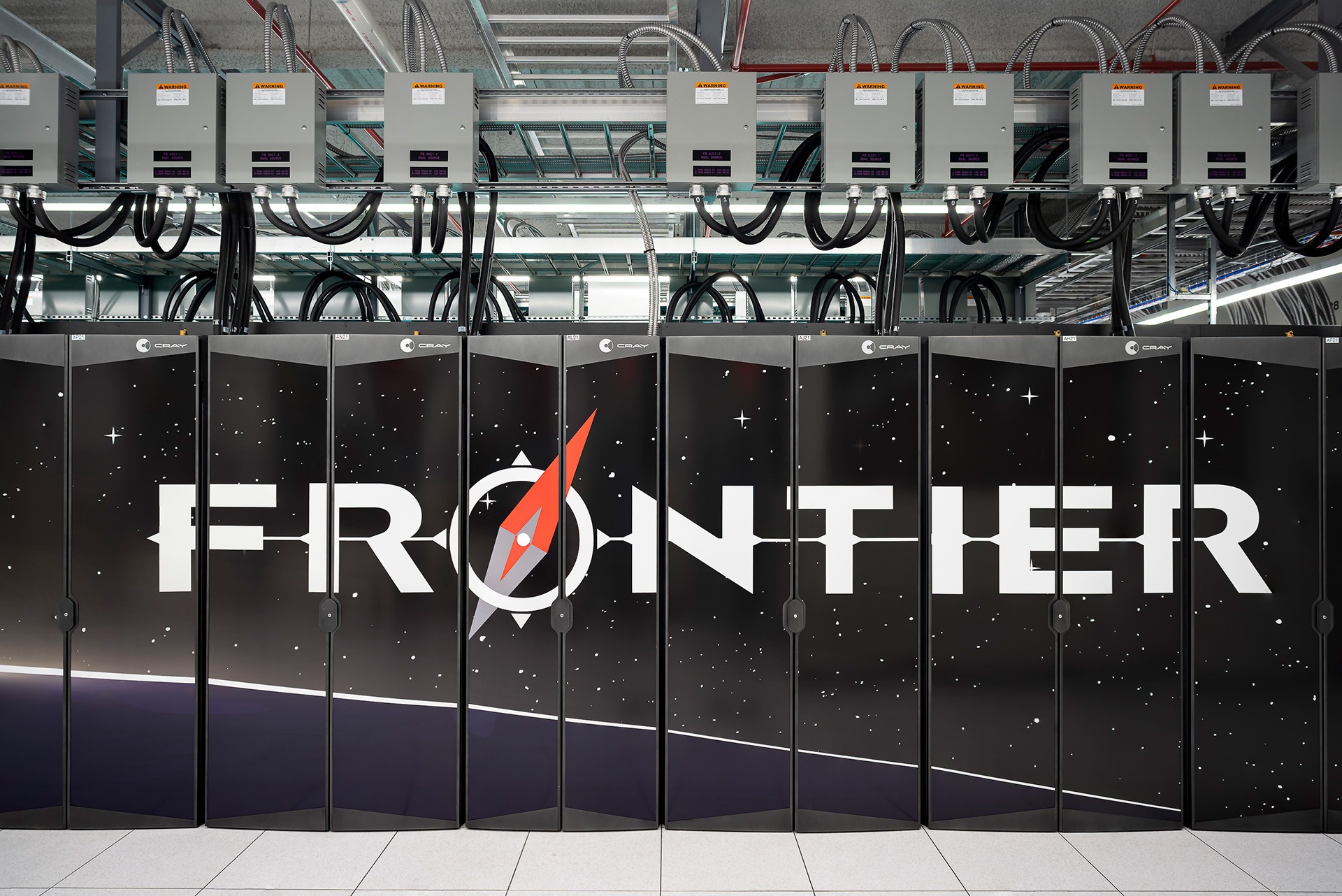In 2017, the Oak Ridge Leadership Computing Facility celebrated 25 years of leadership in high-performance computing. This article is part of a series summarizing a dozen significant contributions to science enabled by OLCF resources. The full report is available here.
In the 1990s, a multi-institutional team used CCS supercomputers to develop the first parallel algorithms for understanding how different substances interact underground. Specifically, the team was interested in groundwater flow and transport in porous media like soil and rocks.
At the time, modeling how groundwater mixed with and transported contaminants below the surface was essential to correcting problems caused by radioactive waste left over from nuclear weapons research conducted during World War II. The problem was so important that ORNL selected it as one of three grand challenges to be addressed in its proposal for an HPC center. The proposal outlined the creation of new models that would help scientists assess risks at contamination sites and evaluate remediation methods.
When ORNL’s CCS was founded in 1992, a current faculty member at the University of Texas–Austin (UT–Austin), Mary Wheeler, and her team pioneered the effort to create the algorithms necessary for simulating groundwater processes, giving scientists a first look at some of the complex interactions that occur during groundwater contamination and remediation.
Wheeler’s team used the IBM SP2 and Intel Paragon systems at CCS to develop groundwater models and codes of unprecedented complexity. The research laid the groundwork for studying groundwater contamination problems on parallel computing systems. Scientists still use these codes today as they search for contaminant removal strategies and prevention plans for some of the world’s most complex groundwater issues.
The Science
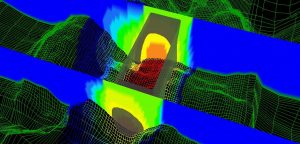
The PICS Groundwater Contaminant Code GCT 1.0 was released in 1994 to simulate saturated unsaturated flow and reactive transport using massively parallel architectures. Here, a GCT simulation showing migration of a high-density contaminant in a clayey aquifer.
From 1950 to 1980, radioactive waste was disposed of in unlined trenches at ORNL under the assumption that geochemical processes would slow any leakage. However, radionuclides—atoms that emit harmful nuclear energy—flowed from disposal sites into local streams, contaminating the environment.
Wheeler and her collaborators created algorithms that could model the kinds of factors that led to the leakage, forming the basis for the first parallel groundwater simulation codes. In 1995, Wheeler helped develop a parallel algorithm for two-phase (air and water) systems of groundwater contaminant transport. The algorithm used the Godunov method and mixed finite element methods, which can accurately account for the mass of a system at a given point in space and time, as well as model grids that change over time, as is the case in porous media transport. The methods used in this algorithm were then implemented into groundwater codes designed in part by the Center for Subsurface Modeling at UT–Austin.
Two of these codes—ParSSim, the Parallel Subsurface Simulator, and GCT, the Groundwater Contaminant Transport simulator—were tested and run on the massively parallel IBM SP2 and the Intel Paragon XP/S 35 supercomputers at CCS, with the help of former ORNL researcher Laura Toran. The ability to generate 3D models of subsurface radioactive decay and the transport of radioactive materials via groundwater provided scientists with new tools to study groundwater patterns and remediation strategies.
In 1998, Wheeler became part of a simulation project based on the radioactive contaminants found at the ORNL site. The team used ParSSim and another geochemistry code called PHREEQC to model how concentrations of strontium, a common waste product of nuclear research, change over time under different levels of acidity in a groundwater system. The team ran ParSSim on the Intel Paragon XP/S 5—a supercomputer donated to Rice University by CCS—using a 1D 100-cell model. The project resulted in the creation of the first model that used a two-tiered approach of simple and complex methods to explain interactions between contaminants and porous media in groundwater transport.
“The two-phase flow codes our team needed to begin solving these problems weren’t available, but we created methods and algorithms for groundwater flow and transport that are still used today to help scientists answer important groundwater questions.” —Mary Wheeler, University of Texas
The Legacy
The algorithms designed by Wheeler and her collaborators ultimately became valuable tools for simulating the complex interactions in groundwater contaminant transport processes. Today, the ParSSim code is used at the Center for Subsurface Modeling at UT–Austin to model single-phase flows and the reactions of multiple chemical substances in groundwater systems.
Wheeler and her colleagues set the precedent for modeling flow and transport in porous media using Godunov and mixed finite element methods, bringing scientists a step closer to understanding and solving some of the world’s most difficult groundwater contamination problems.
In 2013 Wheeler received the International Society for Porous Media, Interpore’s Honorary Lifetime Membership Award for her immense contributions to the field of geosciences.
Related Publication: Arbogast, T., Dawson, C. N., and Wheeler, M. F. (1995), A Parallel Algorithm for Two Phase Multicomponent Contaminant Transport, Applications of Mathematics, Volume: 40, no. 3.


